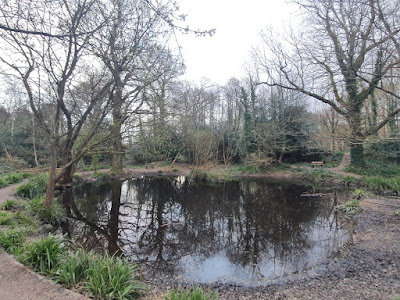Pleasant Surprises in Local Areas
Exploring areas within walking distance of our houses can turn up unexpected finds. These finds will obviously vary depending upon the location and time, and that is all part of the enjoyment and wonder.
On a recent stroll from my house a lesser whitethroat surprised me. I was walking alongside the entrance to a large construction site, yet there he was singing away. As is typical for this species seeing him was a more difficult endeavour than hearing the song, but a modicum of patience on my behalf resulted in a view of this attractive masked warbler. He emerged out of the top of a hedge to perch on an ascending shoot of hawthorn for all of twenty seconds. I have to say this particular patch is quite uninspiring, sandwiched between a busy road and large-scale house building, but even here a small delight could be found.
Close to the lesser whitethroat site is a copse. It is around 15 acres in size and consists of a number of mature trees including oaks, beech and sweet chestnut, as well as coppiced areas, a good section of holly understory, and several ponds. As it is an interesting area on the edge of town there is considerable disturbance from people and their dogs, but once again the unlikely can prevail.
The star species around this copse is undoubtedly the firecrests. I first noticed them in the winter of 2018-2019. They have appeared to be resident since, having occupied a territory and stayed throughout the breeding season in 2019. And this year they are on the same territory. These are real gems, being only slightly larger than our smallest bird, the goldcrest, but markedly more colourful with vivid greens on the body and black, white, and flaming orange on the head.
A piercing, high-pitched call often manifests their presence. Being so small they live on a different timeframe to ourselves, and are incredibly active. Staring at a bush that has recently emanated a sound that would make the most skilled soprano jealous is the best way of seeing these splendid creatures. As they rarely sit still you are hoping to catch a glimpse of movement revealing their location, and they are no larger than a typical leaf. One memorable encounter with one of the firecrests on March 28th this year involved the bird going to a temporary pond for a drink, and what must have been the world record for the fastest ever bath.
Goldcrests also occur in the copse. The favoured areas of the goldcrests and the firecrests are within the extensive holly running through the woods. The mature trees play host to a number of typical woodland species including nuthatches, green and great spotted woodpeckers, and the surprisingly difficult to find treecreepers. As spring has progressed blackcaps have appeared in good numbers and fill the trees with delightfully melodic songs.
All of this is in a relatively small area of habitat that couldn’t exactly be described as pristine. In these unusual times I hope appreciation for such spaces increases, and motivation for creating areas of relatively high usefulness for wildlife is found.
- Hugh Baggaley






Comments
Post a Comment